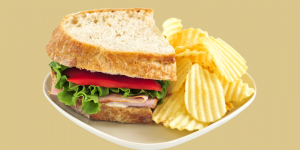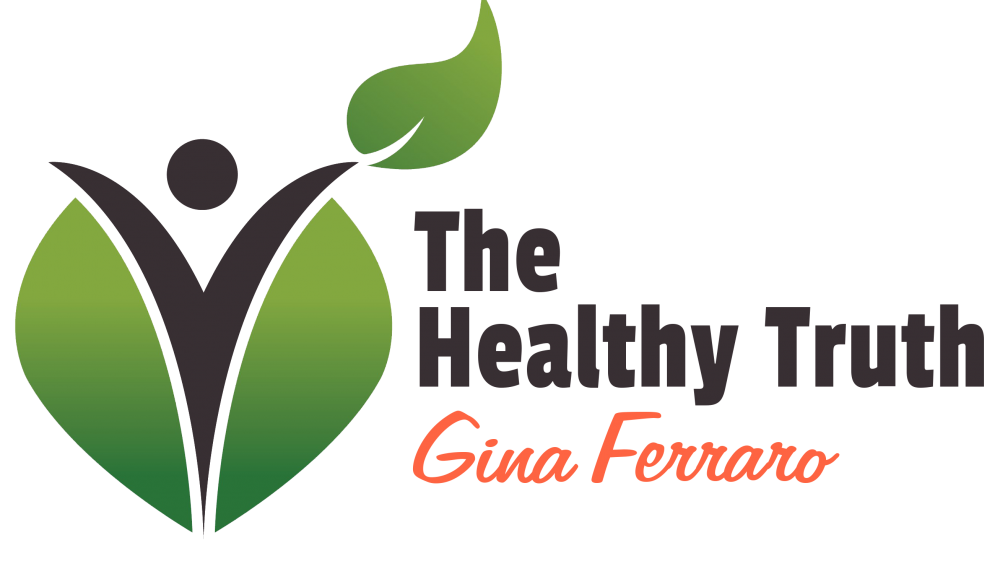by Gina Ferraro | May 20, 2014 | Diet, Exercise, Health, Nutrition, Weight loss, Wellness

Burn fat fast with explosive exercises
Metabolism is the energy required by your body to maintain itself. There are a few things that contribute to this. Genetics of course … but there ARE ways to increase your metabolism.
First and foremost – exercise! But the greatest metabolic burn occurs with high intensity-type of exercise. Interval training (HIIT), power training (explosive), and strength training are the BEST methods. These recruit all your muscle fibre types and use the most amount of calories to do so. They are anaerobic therefore they are high intense with shorter duration periods (meaning they require rest in between sets). They are MY favourite cardio exercises to do and in fact I am dressed ready to head to the gym to partake in my own HIIT session. 🙂 The great thing about these types of training is that you aren’t just burning extra energy whilst performing the activity itself, but you have the added benefit of burning more energy during the recovery period. Because these activities are so intense, the recovery period extends for a longer period and requires much more energy to repair the body than lower intensity activities.
Remember though that the workout is only a small part of fat loss. Don’t ruin your hard work by putting low quality food into your mouth after. If you want your body to use stored fat as fuel for your workout – then stop overfeeding it otherwise it has all the fuel it requires and doesn’t need to tap into its stored sites.
Please note: Some explosive exercises can be contraindicated for injuries (depending on the injury and the exercise being performed) so be aware and consult with a reputable musculoskeletal specialist (such as a physiotherapist) if unsure. Then get an exercise program designed by a reputable Exercise Physiologist (….I can refer a great one!)
Secondly, the types of foods you eat will determine the metabolic response. Natural foods take more energy to digest than their processed counterparts – as too does protein. It is largely believed (and actually promoted by a lot of fitness “professionals”) that “grazing” throughout the day helps to stoke the metabolic flame that helps you to lose weight. Specifically, that eating smaller meals more frequently will raise their metabolism enough to lose weight.
There is some truth to this statement in that our metabolism increases each time we eat, as our bodies have to use energy to break down the food we have put in. But what isn’t taken into consideration is how MUCH it increases. The more you eat at one meal, the more digestion and work needs to be done by the body and the higher the metabolic increase. If you eat less at each meal but eat more frequently, your metabolism increases more OFTEN….but not as much as with a larger meal. So which is better?
Bottom line: Choose the eating pattern that works best for you.
So we need to consider the TOTAL amount of metabolic increase over the entire day’s eating. If you were to eat 2000 calories over three meals, and the SAME calories (and types of food) over six smaller meals, your metabolic increase is roughly the same! Interestingly, adding protein to every meal does in fact increase energy expenditure because protein is harder to break down (see https://www.thehealthytruth.com.au/a-calorie-is-not-a-calorie/)
Enjoy, and don’t forget to put some quality into your training AND into your food choices and you will find your metabolic rate firing on all cylinders.
by Gina Ferraro | Apr 23, 2014 | Diet, Health, Nutrition, Weight loss, Wellness

The liver is our major detoxifying body organ. Whatever toxins we ingest, our poor liver has to deal with it (though other organs do too). Alcohol is a toxin. The liver breaks down alcohol at approx 1 standard drink p/hour.A standard drink is any drink containing 10 grams of alcohol:
* 100 ml wine
* A middy of beer (285ml)
* A schooner of light beer (425ml)
* One nip of alcohol (30ml of high strength 40% alcohol)
Yet many people drink WAY more than that.
Alcohol:
* Impairs digestion (leading to malnutrition of essential nutrients)
* Can cause insulin resistance
* Is a testicular toxin thereby increasing the activity of an enzyme that converts testosterone to oestrogen
* promotes fat storage around the abdomen
It increases the risk of:
* liver disease
* neurological damage
* cancer
* heart disease
* damage to the gastrointestinal tract
* injury
Its also very energy dense – yielding 7 calories per gram (though to be fair 2 of those calories are used up during digestion – this is the TEF) but these calories are preferred over all others so it will use it before it uses anything else (thereby making fat removal much harder)
A schooner of full strength beer (450ml) provides 714 kJ (170cals) ie. four beers equals 2856 kJ (680cals)
A Spirit and coke (one 30ml nip) provides 504kJ (120cals per glass)
1 bottle of wine (approx 4 large glasses) provides 2,352 kJ (560cals)
1 hour of walking burns around 1,050 kJ (250 cals). If you had 4 glasses of wine you would need to walk for over 2 hours just to burn it off (that’s just to get back to square one), then you need to complete your regular exercise to remove your stored fat.
I’ve heard so many people tell me they “burn off” their alcohol and this is just ridiculous thinking. Alcohol doesn’t just consist of calories – it is a poison! It’s all about health – not just about your clothing size! Don’t make silly choices and understand the risks you are taking.
That one was for you Scott.
by Gina Ferraro | Apr 20, 2014 | Diet, Exercise, Health, Nutrition, Weight loss, Wellness

It is predicted that the children of today will have a lifespan ten years LESS than their own parents! This is due to their sedentary lifestyle and toxifying their bodies with processed foods high in sugar, trans fats, and additives. And this is often occurring in foods that people “THINK” is healthy too, such as fruit juices and yoghurts…which are riddled with sugar. This is unacceptable! These “sometimes” foods have now become part of everyday eating….and it is the cause of the alarming growth of disease statistics. As a child I can’t remember a day that I wasn’t outside roller skating, riding my bike, playing hopscotch, elastics (wow….remember elastics? lol), doing handstands, heading down to the ice-rink etc etc. And this was on TOP of all the sport I played in school.
Today most kids are living sedentary “virtual” lives where they are hypnotised by video games of all sorts. Parents are so time poor that they often feed their children “quick & easy to prepare” food that is harming them. Cardiovascular disease risk factors are now being observed in children in primary school (and some even in infants school) and this is something that is easily preventable. Who would wish that sort of life for their child? Have a look at the kids in the pics on our Facebook Page (facebook.com/thehealthytruthsydney). That is NOT “puppy” fat. It is downright child abuse to lead a child down this path. Wake up people! We need to take control of what we feed our family and be responsible for the consequences of our negligence. I am not here to pull punches. I am here to tell you the cold hard facts. I’d rather you be annoyed with me now reading this than sorry later when you see the outcome affecting your children’s health and wellbeing. Oh and please don’t think that your child has “gotten away risk free” from all the bad food just because they exercise and don’t put on weight. These foods are damaging them on the inside and the result will eventually reveal itself when it is often too late.
by Gina Ferraro | Apr 15, 2014 | Diet, Health, Nutrition, Weight loss, Wellness

A calorie from one type of food is NOT equal to a calorie of another! That undermines everything there is to know about nutrition! A protein calorie is different to a carbohydrate calorie which is also different to a fat calorie. Specifically, the thermal effect of food (TEF) is different for each one. Protein uses the most amount of energy to digest (around 20-30% of its calories). Carbohydrates on the other hand, uses only 5-10% of its calories, with fats even lower at 0-3%. Furthermore, processed food calories are NOT the same as natural food calories. The body processes them VERY differently.
There may have been a time you ate more calories than you thought you should… but got leaner. Or you ate fewer calories than you thought you should… and gained weight. (Or you didn’t lose that last stubborn 5 kgs.). Or you started eating breakfast instead of skipping it… and dropped a couple of cms off your waistline. According to the simplistic “all calories are the same” view or the “food is fuel” view, none of this should be possible. Yet it happens all the time.
Everyone has a “set point” weight, and that is determined by genetics and hormones. It’s the QUALITY of the calories we eat, and the QUALITY of exercise we do that allows us to change our hormones. In order for us to do that, in order for us to lower our set point weight, we have to understand what determines the quality of a calorie; so we can eat the highest quality calories possible.
I was listening to a podcast last night that explained this perfectly:
“Four main areas that determine quality calories:
1. Satiety – how quickly calories fill us up and how long they keep us full.
2. Aggression. – how likely calories are to be stored as fat.
3. Nutrients – things like protein, vitamins, minerals, essential fatty acids
4. Efficiency – how many of the calories we eat can be stored as body fat.
The more satisfying, unaggressive, nutritious, and inefficient a calorie is, the higher its quality. These calories trigger body fat burning hormones when we eat them. They also clear our metabolic clog and prevent us from overeating. They’re a bit like metabolic Drano”.
Suggested reading: https://www.precisionnutrition.com/digesting-whole-vs-processed-foods




